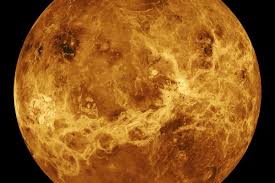Four proposals were selected to move to the next stage of NASA’s Discovery Program
Source: The Verge
NASA just gave four teams $3 million each to bring their Solar System exploration dreams closer to reality. Two of the scientific teams have their sights set on Venus, one is focused on Jupiter’s highly volcanic moon Io, and the last is targeting Triton, a moon of Neptune.
“These selected missions have the potential to transform our understanding of some of the solar system’s most active and complex worlds,” Thomas Zurbuchen, associate administrator of NASA’s Science Mission Directorate, said in a press release. “Exploring any one of these celestial bodies will help unlock the secrets of how it, and others like it, came to be in the cosmos.”
The four teams are finalists for NASA’s next round of Discovery-class missions. Discovery-class missions are considered NASA’s “small” planetary science missions. These projects can cost no more than $450 million and are intended to complement NASA’s larger Solar System exploration missions, including the midsized New Frontiers missions and the flagship Solar System Exploration missions.
Of the four teams selected today, no more than two will actually be fully funded. The $3 million that they’ve just been awarded will be used to develop their mission plan, and concepts related to their mission over the course of nine months. At the end, each will present NASA with a study report and wait to see which of them actually makes the cut.
Here are the four projects selected today:
VERITAS — VERITAS stands for Venus Emissivity, Radio Science, InSAR, Topography, and Spectroscopy. Its focus would be on mapping the surface of Venus and gathering data about how and why this planet developed so differently from Earth.
DAVINCI+ — DAVINCI+ stands for Deep Atmosphere Venus Investigation of Noble gases, Chemistry, and Imaging Plus and, as the name suggests, is also looking to go to Venus. Instead of focusing on the planet itself, it would focus on the gases surrounding the planet. One highlight of the potential mission would be sending a probe deep into Venus’ atmosphere. Its goals are to see how Venus’ atmosphere evolved and whether it had an ocean.
IVO — The Io Volcano Observer would visit Io, a moon of Jupiter and the most volcanic body in the Solar System. This mission would get a closer look at Io’s extreme volcanism and try to understand more about the moon’s structure.
Trident — The only non-acronymed proposal in the bunch, Trident would visit Triton, one of Neptune’s moons. The flyby mission would map the moon’s surface, and would look for clues as to whether the moon really has a predicted subsurface ocean.
Current Discovery missions include the Lunar Reconnaissance Orbiter (LRO) and the Mars InSight probe. The track records of the projects have been mixed. While the LRO has been in orbit around the Moon since 2009, and continues to collect valuable data, the InSight lander ran into trouble last year when a burrowing heat probe unexpectedly popped back up out of the Martian surface.
Two other Discovery-class missions were selected in 2017 and will launch in the next few years. Lucy will launch in 2021 and will explore seven asteroids, while Psyche will launch in 2023 and will explore a giant metal asteroid.
A final decision on which of the four newest projects will become fully funded missions is expected next year.
Source: The Verge

































Leave a Comment
You must be logged in to post a comment.